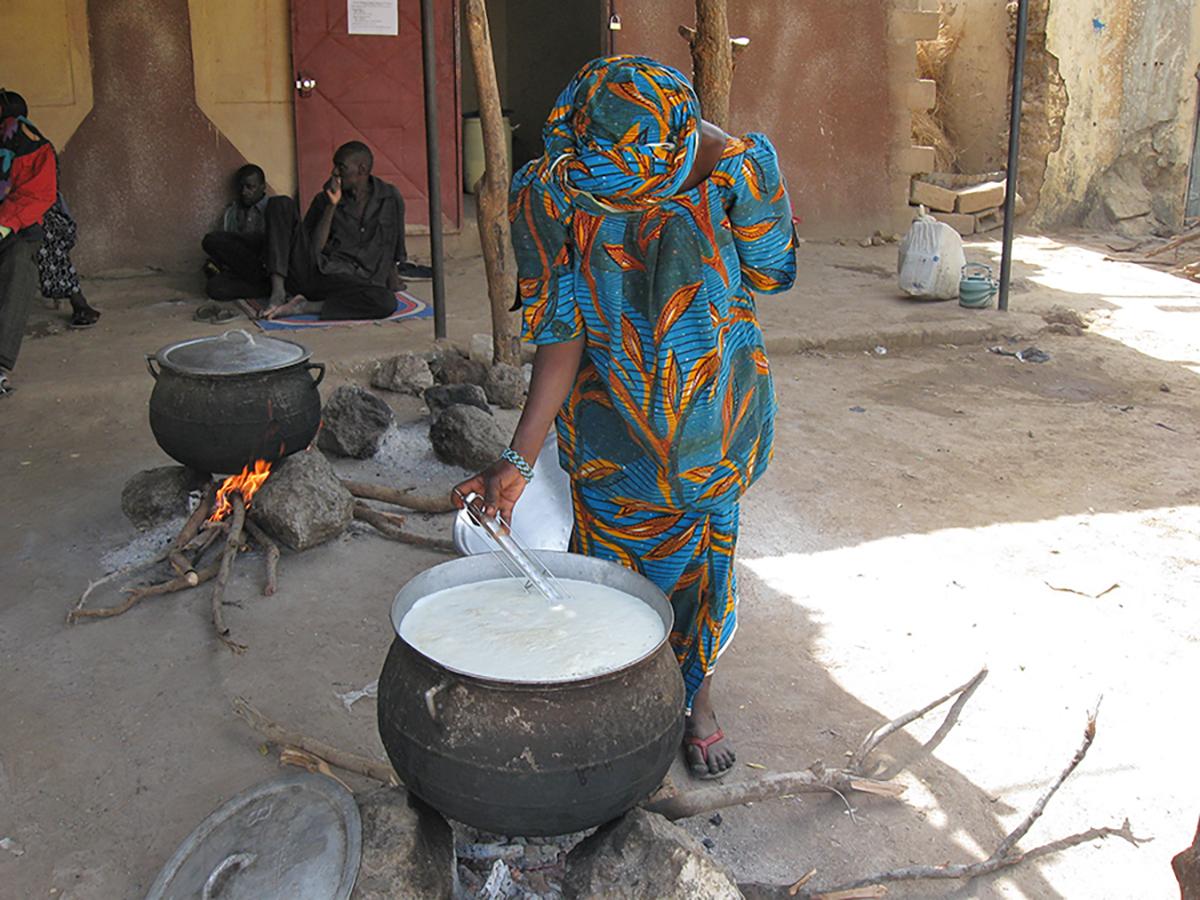ONE HEALTH CASE STUDIES I
3.12
Mitigate food risk but maintain nutritional value
Given the high levels of contamination in milk that is sold in informal markets and poor hygienic practices along the chain from farm to retail shops, boiling of milk before consumption helps to reduce public health risks from milk-borne pathogens.
When clean milk cannot be assured during the process in the chain, boiling before consumption is required, but improper boiling may destroy the nutritional properties, eg vitamins. Pasteurisation techniques are important but do not allow for conservation longer than two weeks. Ultra rapid sterilisation is an option if resources are available.
In rural areas, the main energy used is wood or charcoal to provide fire for direct milk heating. Boiling too much can destroy milk properties. It is important to monitor the level of heat (80°C is optimal) using a thermometer, and limit the time to 5-10 minutes.

Heating milk in a rural setting with energy from wood
© Bassirou Bonfoh/CSRS
Another technique for preservation is fermentation, a metabolic process where yeast or bacteria convert sugar to acids, gases, or alcohol. Examples are lactic acid fermentation (milk to milk products), alcoholic fermentation (honey, palm sap, fruit juice, cereal grains, grain malt to wine, beer, vodka) and solid state fermentation (rice and cheese by fungi).
Different types of foods are fermented and consumed in daily diets. Fermentation adds physical and nutritional benefits to the food, with some key roles in food processing: enhancing a range of flavors, odours and textures of food; food preservation through lactic acid, alcoholic, or alkaline fermentations; increasing the nutritional value of food through production of different vitamins, proteins, antibiotics; and reduction in toxins.
Fermented foods represent approximately one-third of food consumed in some regions. From yoghurt and bread to beer and wine, fermentation plays a role, not only in the production of these compounds but also to provide functional properties of food products and ingredients. By using different microbial strains, optimum fermentation conditions and different advanced techniques, diverse fermented products are manufactured, such as dairy (cheese, butter) vegetable (pickles, olives, and sauerkraut), meat, beverages, bread, vinegar and other organic acids.
Along with these advantages, fermentation technologies are also sensitive, and there is a risk of contamination and intoxication necessitating careful control. Fermentation can be a result of food spoilage when the couple time/temperature conditions are not met and could thus also present a health risk for consumers.
What is your experience. Which products are consumed raw in your area, and why are these products not processed?
References
Ayesha Sajid (2012). Role of fermentation in food technology, Roll No. 27.
License
University of Basel
